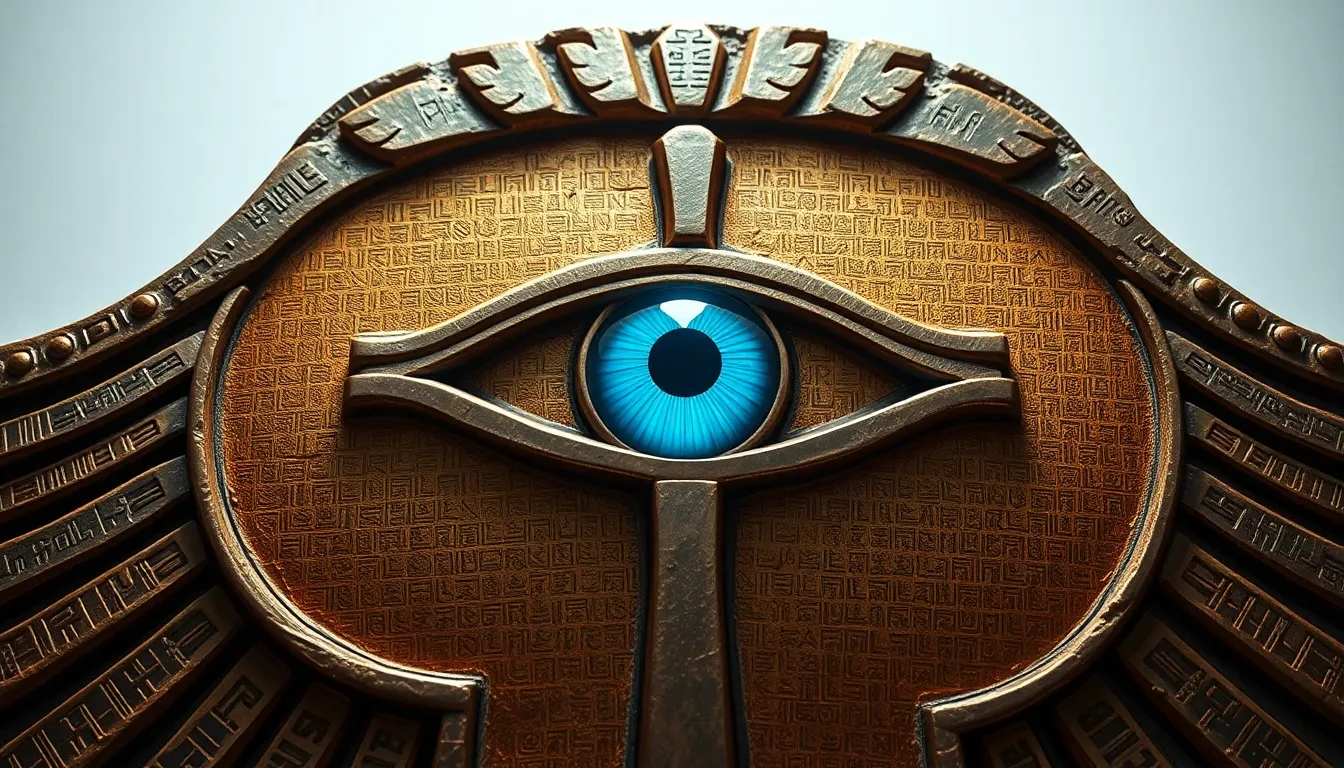The Divine Protection of the Eye of Ra
I. Introduction
The Eye of Ra is one of the most potent symbols in ancient Egyptian mythology, representing divine protection, power, and the unyielding force of the sun. It embodies the protective nature of the sun god Ra and serves as a guardian against chaos and evil. This article explores the multifaceted significance of the Eye of Ra, its historical context, myths, rituals, artistic representations, and its influence on modern culture.
II. The Symbolism of the Eye of Ra
The Eye of Ra is often depicted as a stylized eye, sometimes with a teardrop or markings that resemble a falcon. This imagery is not merely decorative; it symbolizes the all-seeing nature of the sun and the protective qualities associated with it.
- The Eye as a symbol of power: It signifies the might of Ra, the sun god, who governs the heavens and the earth.
- Protection: The Eye serves as a shield against evil forces, ensuring the safety of both the living and the dead.
The connection to Ra is integral, as the Eye is often portrayed as an extension of his power. In many myths, the Eye acts independently, showcasing its role as a fierce protector of order and justice.
III. Historical Context
The origins of the Eye of Ra can be traced back to the early dynastic period of ancient Egypt, where it was closely linked to solar worship. Over time, it became intertwined with various deities and symbols, reflecting the complexity of Egyptian religious beliefs.
Throughout different dynasties, the representation of the Eye evolved:
- In the Old Kingdom, it was primarily associated with Ra.
- The Middle Kingdom saw its integration with the goddess Hathor.
- During the New Kingdom, it became linked to the goddess Sekhmet, the warrior aspect of the Eye.
IV. Myths and Legends Surrounding the Eye of Ra
The Eye of Ra features prominently in various myths, illustrating its role in the cosmic struggle against chaos. One of the key stories involves the Eye being sent out by Ra to punish humanity for their disobedience.
In another myth, the Eye transforms into the fierce goddess Sekhmet, who is unleashed upon the world to combat evil and restore order. These narratives highlight the Eye’s function as a divine enforcer of justice.
- The Eye’s role in the battle against chaos and evil is emblematic of ancient Egyptian values that prioritize order (maat) over chaos (isfet).
- Interpretations of these myths reveal a deep understanding of the balance between creation and destruction inherent in Egyptian thought.
V. The Eye of Ra in Ancient Egyptian Rituals
Rituals invoking the Eye of Ra were essential in ancient Egyptian religion, reflecting the people’s desire for divine protection. These rituals often included offerings, prayers, and specific ceremonies aimed at appeasing the Eye.
Amulets and artifacts featuring the Eye of Ra were commonly used:
- Amulets were worn to invoke the Eye’s protective powers.
- Funerary practices incorporated the Eye to ensure safe passage into the afterlife.
VI. The Eye of Ra in Art and Architecture
In ancient Egyptian art, the Eye of Ra appears in various forms, from wall paintings in tombs to carvings in temples. These depictions serve not only an aesthetic purpose but also a protective one, as they were believed to offer safety to the deceased in the afterlife.
Architectural features, such as the Eye of Ra inscribed on temple walls, emphasized its significance:
- Temples dedicated to Ra often featured the Eye prominently to invoke divine protection.
- Public art served to remind the populace of the ever-watchful Eye and its role in maintaining order.
VII. Modern Interpretations and Influence
The Eye of Ra continues to resonate in contemporary culture, often reinterpreted in various forms of art, literature, and spirituality. Its symbolism has been embraced by modern spiritual movements that seek protection and enlightenment.
In popular media, the Eye of Ra has influenced:
- Movies and television series that explore themes of ancient Egypt.
- Literature that draws on mythological elements for storytelling.
Today, the Eye of Ra is recognized not only as a historical symbol but also as a powerful emblem of protection in modern practices, including in jewelry and talismans.
VIII. Conclusion
In summary, the Eye of Ra stands as a potent symbol of divine protection in ancient Egyptian mythology, embodying the protective power of the sun god Ra. Its significance transcends the ages, reflecting the values and beliefs of a culture that revered order over chaos.
The enduring legacy of the Eye of Ra serves as a reminder of the importance of mythological symbols in understanding cultural values and spiritual beliefs, both in ancient Egypt and in contemporary society.




